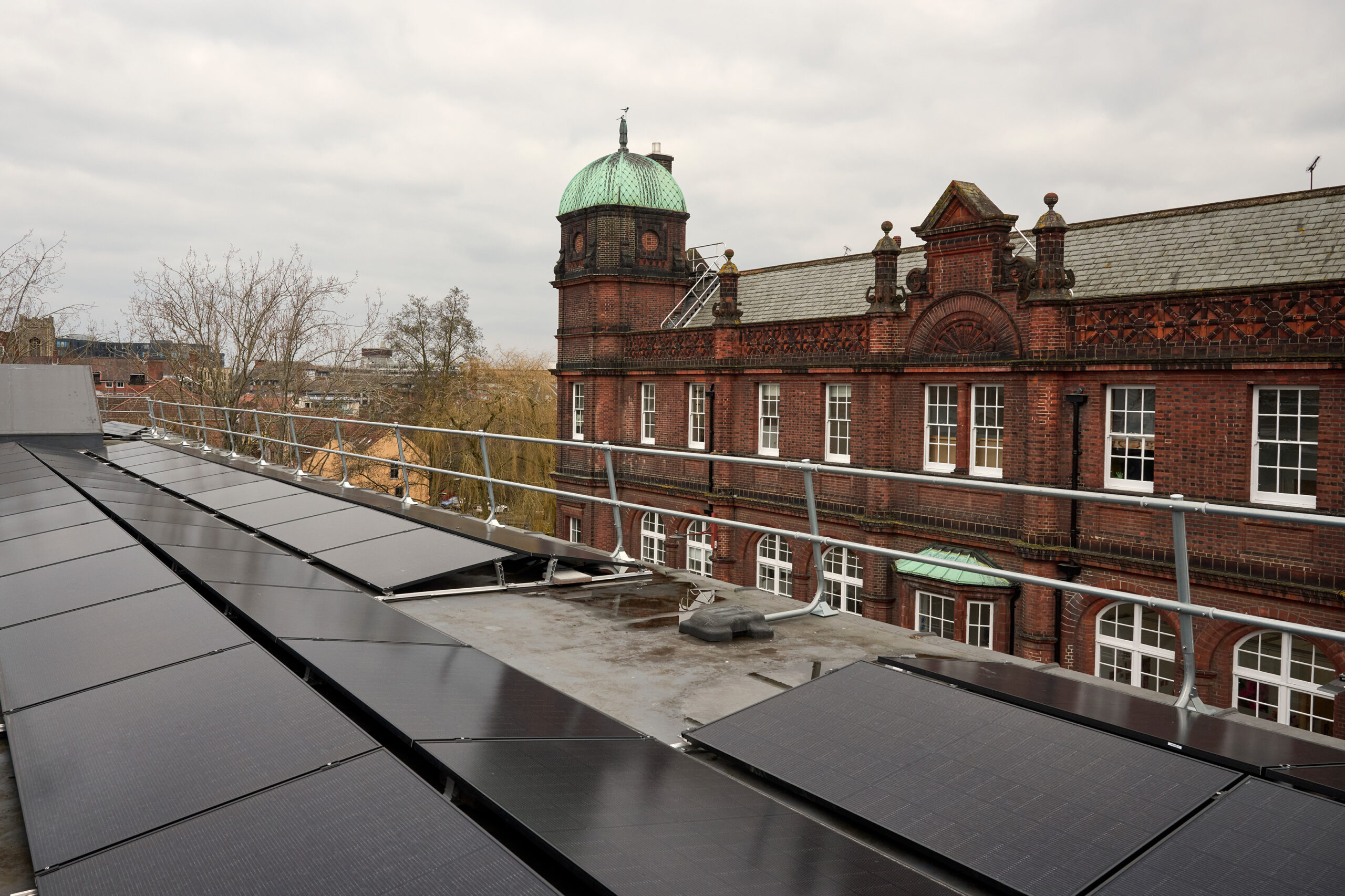
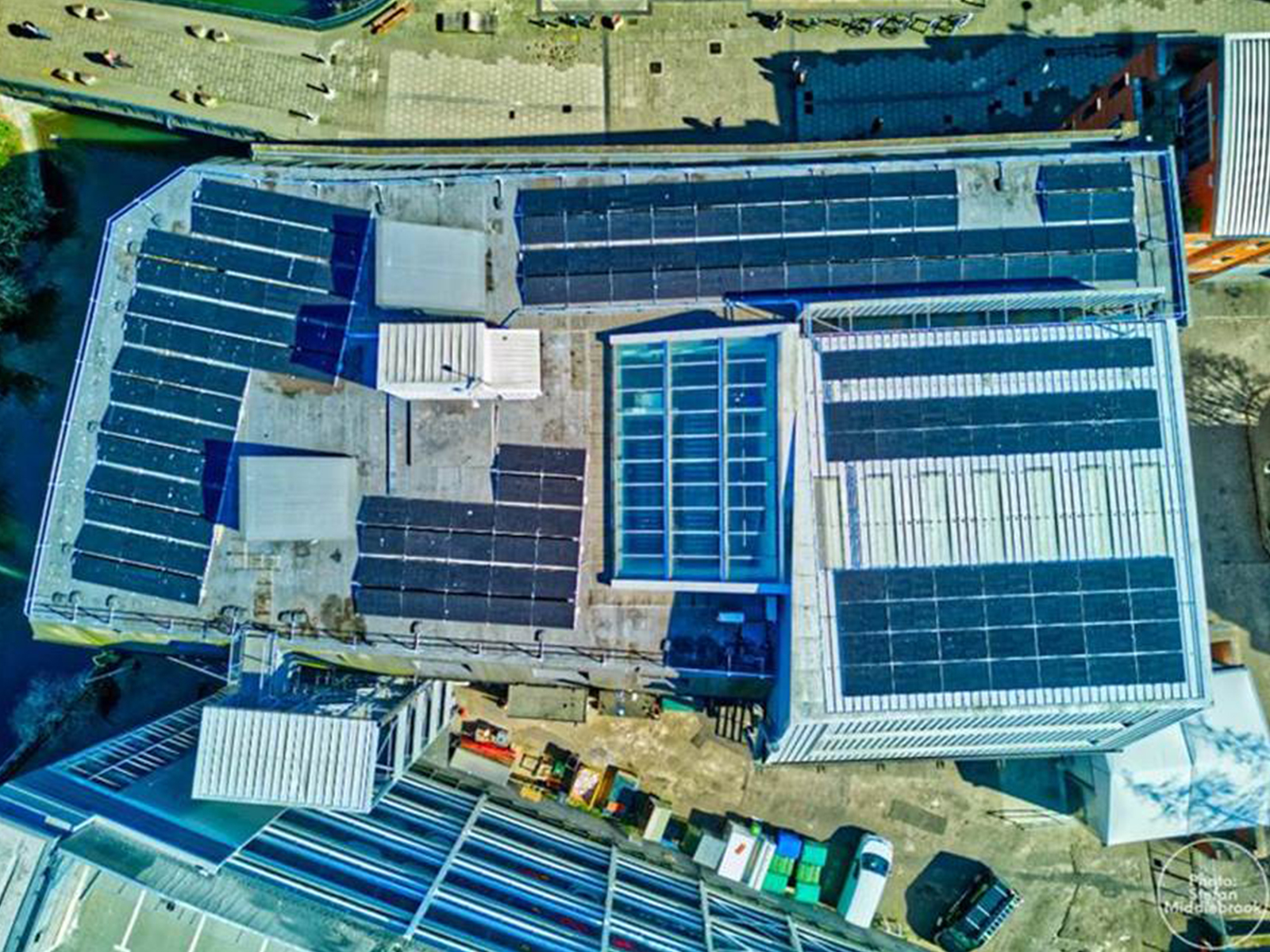
The big switch on: Norwich University of the Arts powers up with solar energy
Norwich University of the Arts is making a bold and exciting move toward a more sustainable future. On 22 April 2025, 264 new solar panels will be officially switched on across our Guntons and St Andrews buildings – a key milestone in our ongoing efforts to reduce carbon emissions and transition to greener energy sources.
This switch-on marks the culmination of a two-year project involving detailed research, thoughtful planning, and close collaboration with expert partners. Our aim is clear: to lower our carbon footprint and use energy more responsibly. It’s also a vital part of the University’s broader commitment to environmental action, underpinned by creativity and innovation.
At our Guntons building, we’ve installed 186 solar panels, which will cut our reliance on electricity from the national grid by around 20% each year. In the summer months, when we generate more energy than we use, we’ll sell the surplus – around 19,564 kWh annually, or 33% of our total solar output – back to the grid. Based on this, the system is expected to pay for itself within seven years.
Meanwhile, St Andrews House now hosts 78 solar panels, most of which will power the building directly. These panels are also projected to pay for themselves over the same timeframe.
“These solar panels are part of a wider sustainability programme at the University”
Professor Simon Ofield-Kerr, Vice-Chancellor.
“This includes the restoration of historic buildings and the launch of our new Institute for Sustainable Worlds – a space for research, creativity, and action dedicated to building better futures for our planet.”The University worked closely with AM Electrics Ltd on the installation, ensuring minimal disruption to staff and students throughout the process. Special thanks go to Colin Bunnewell, Assistant Estates Manager, and the entire Estates team for their dedication and hard work in delivering this ambitious project.
Related News
-
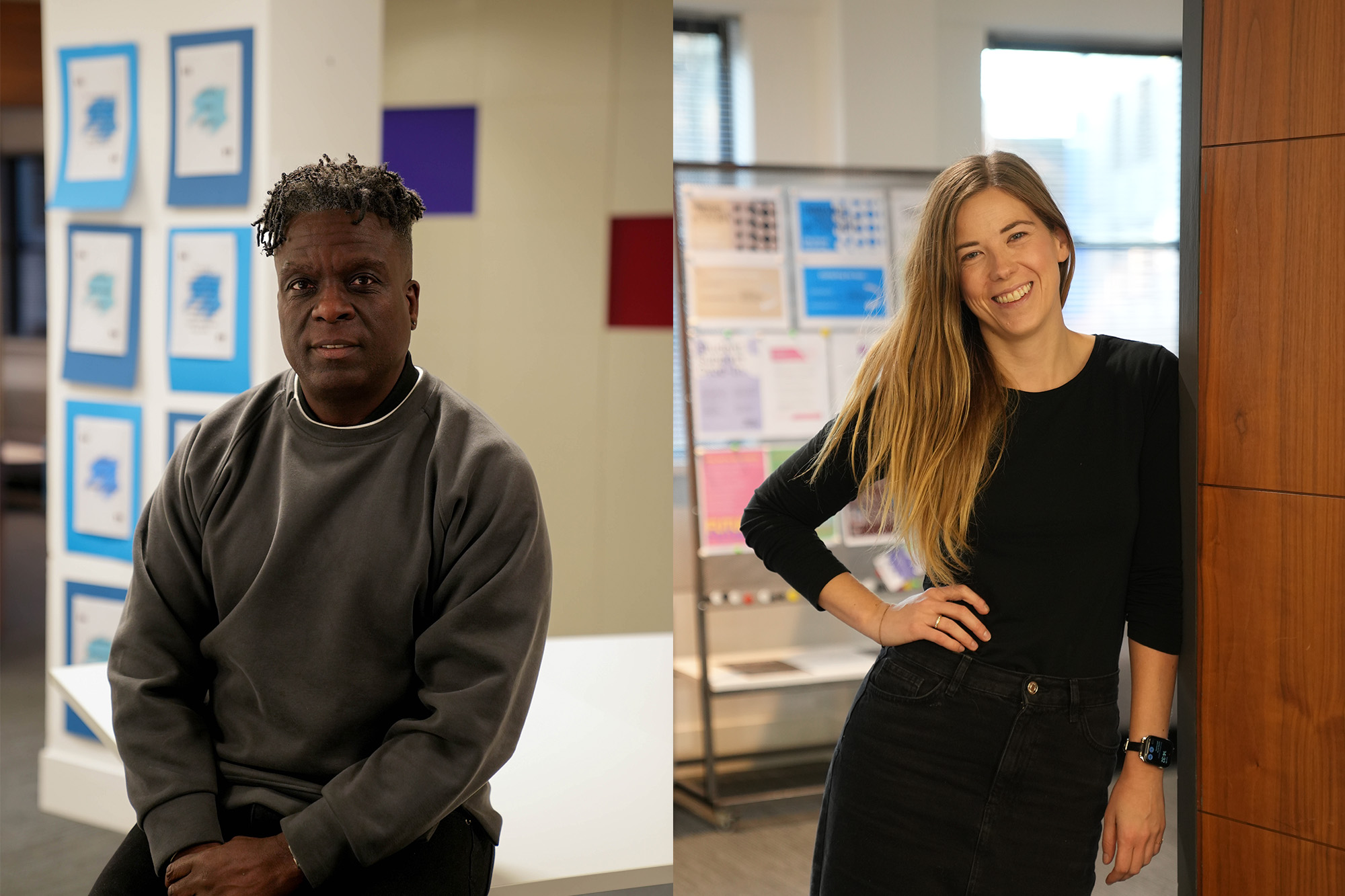 BA Business Management •
BA Business Management •In conversation with Norwich’s newest lecturers in Marketing and Business Management
We joined Norwich's newest lecturers, Stephen Balmer-Walters and Laurie McAllister, to find out more about the University's Marketing and Business Management courses. -
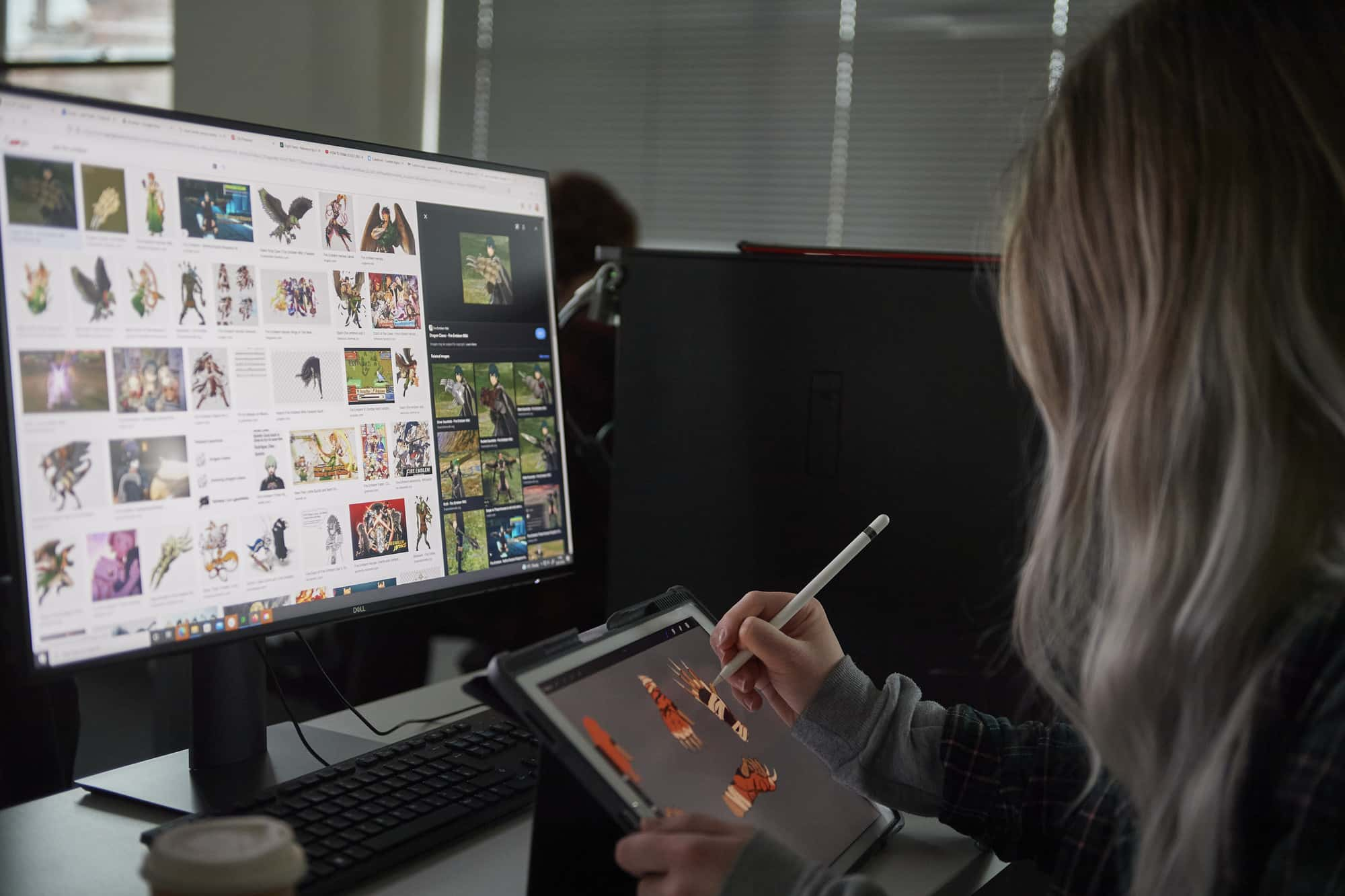 BA Games Art and Design •
BA Games Art and Design •East of England set to become UK’s next Games Cluster, says landmark report
A major new report is calling for the creation of a Games Cluster for the East of England — positioning the region as a national leader in creative technology and immersive media. -
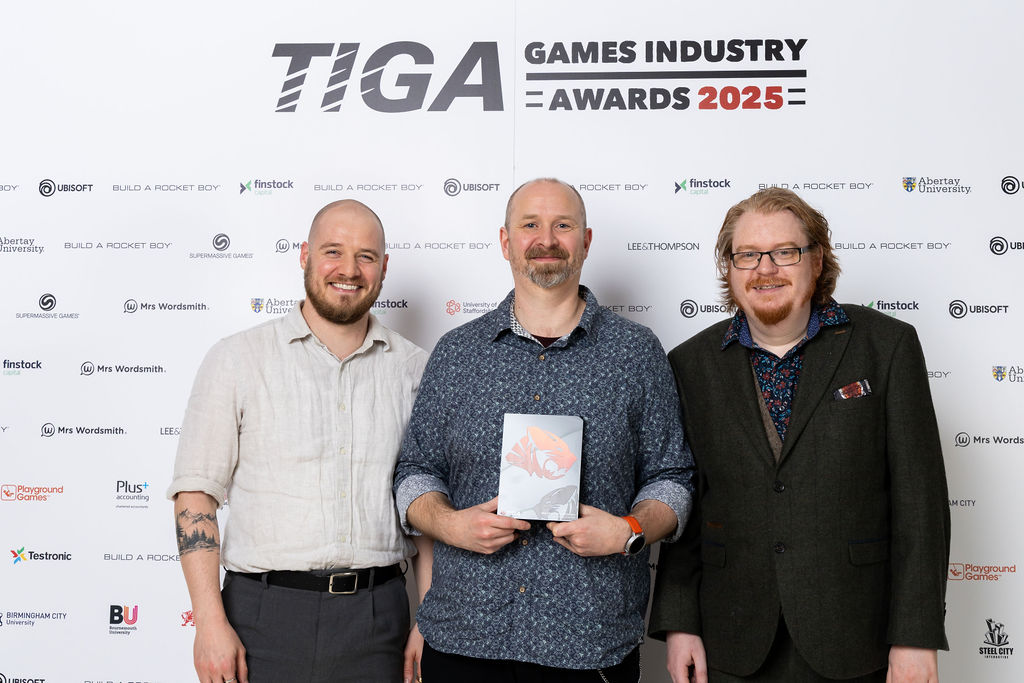 BA Games Art and Design •
BA Games Art and Design •Norwich awarded Best Education Initiative at the TIGA UK Games Industry Awards
TIGA, who represent the UK video games industry, have recognised the University’s commitment to graduate success and industry-focused learning in their 2025 awards. -
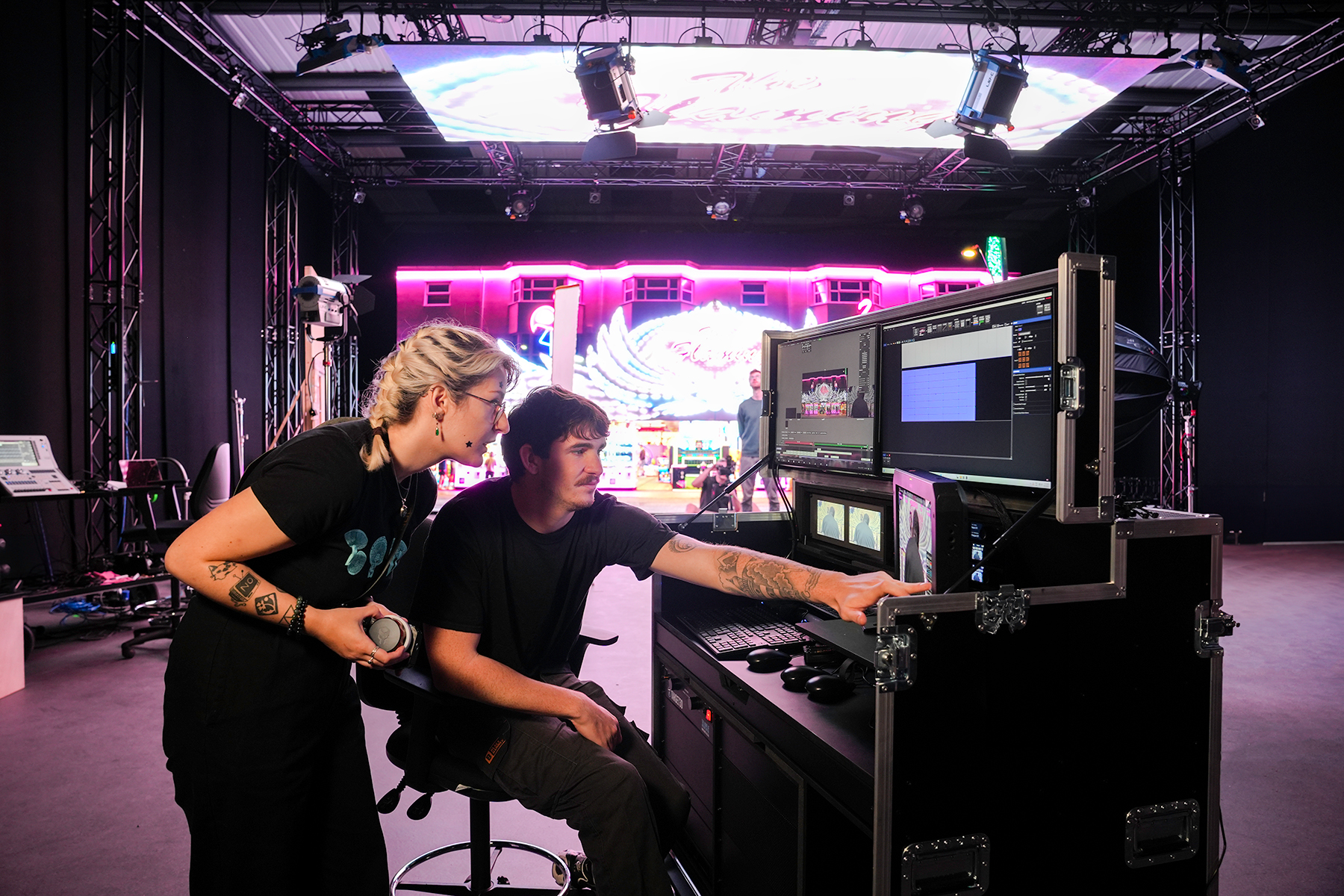 BA Animation •
BA Animation •Cutting edge Sony Virtual Production Studio puts Norwich on the map for the future of film and gaming
Norwich University of the Arts and Sony open new landmark facility for students, creators and the community. -
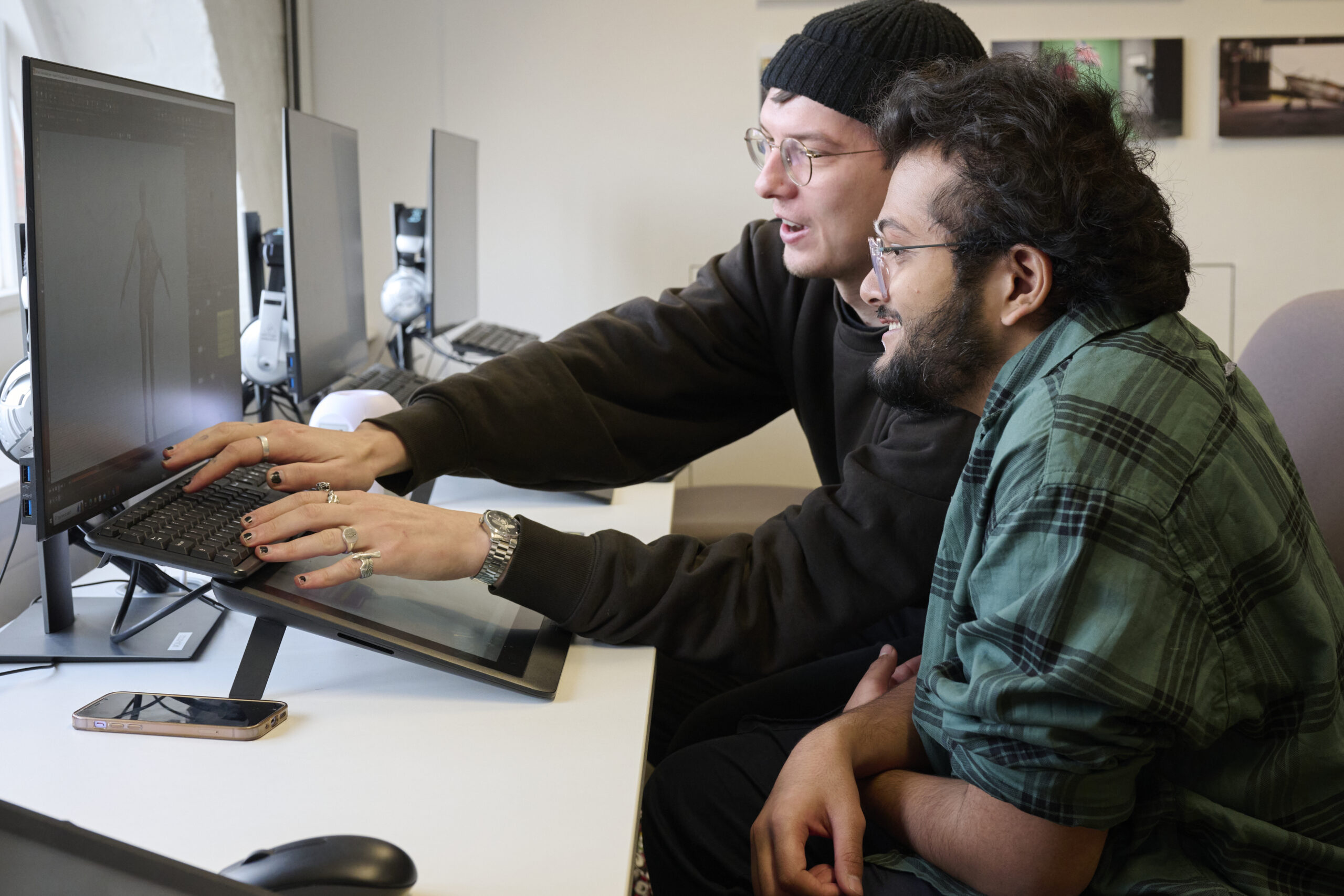 BA Animation •
BA Animation •Norwich named top UK university for production excellence in visual effects
The University has been placed in three categories in the 2025 Rookies Global School Rankings, including the top five for Production Excellence – Visual Effects. -
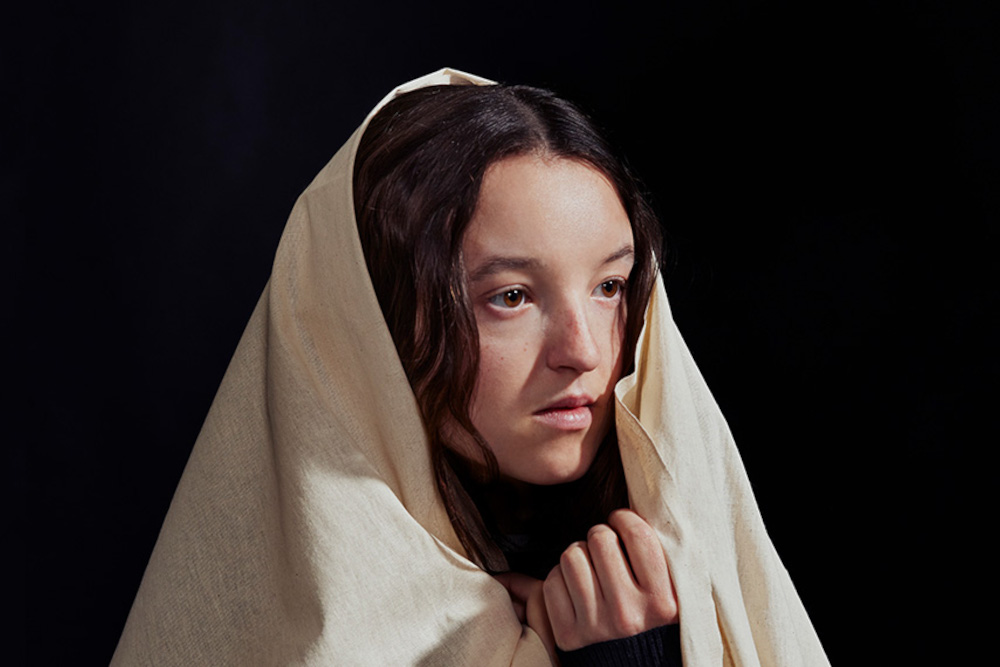 BA Photography •
BA Photography •Entries open for Norwich's 2026 Beyond the Frame photography competition
Entries are now open for our annual photography competition, open to students aged 11 to 19 around the world. -
 BSc Degree •
BSc Degree •Norwich University welcomes new academics to its Psychology and Computer Science courses
Lyndsey Wallace joins the University as Senior Lecturer for BSc (Hons) Psychology, with Jawwad Chattha joining as Course Leader for BSc (Hons) Computer Science. -
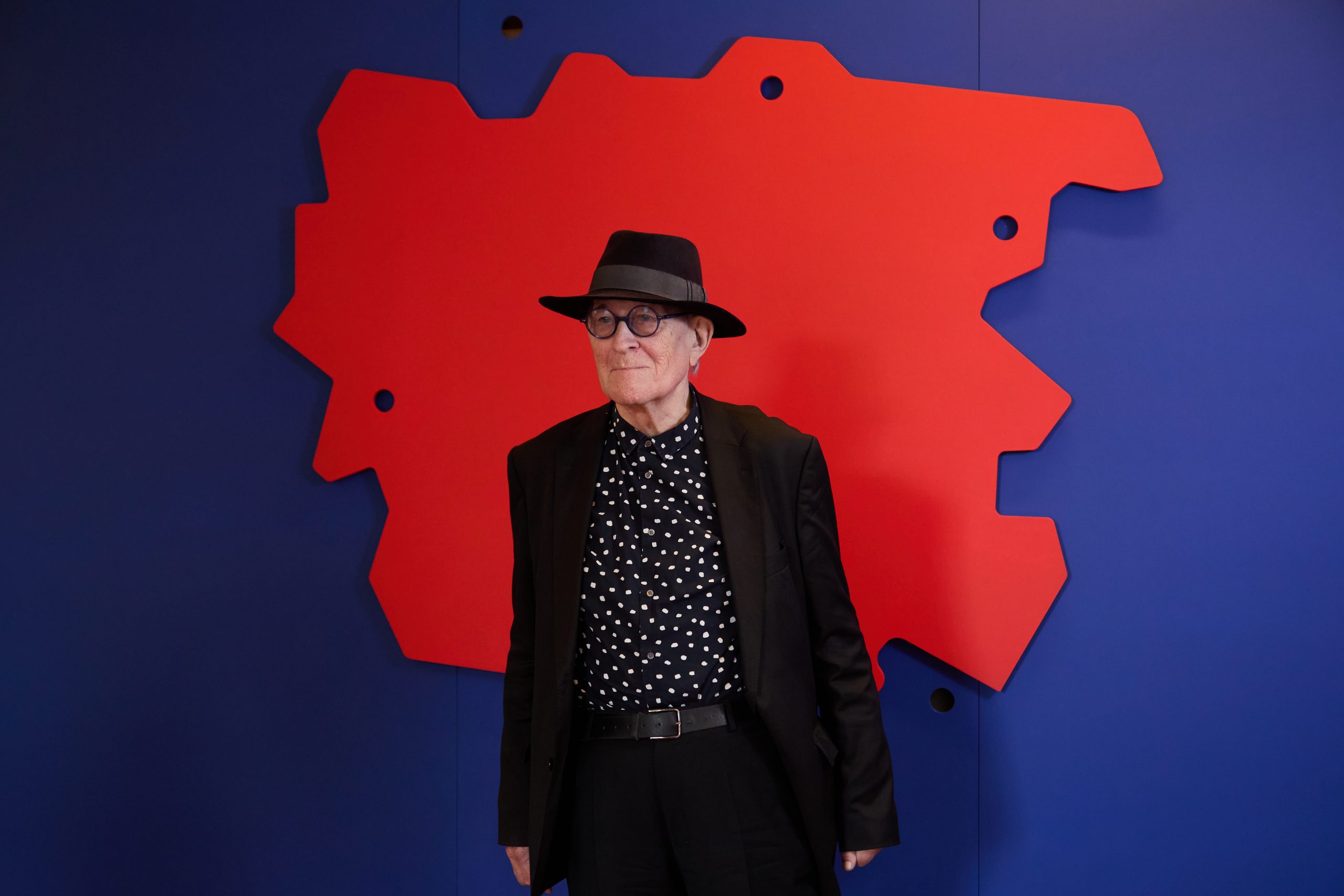 BA Architecture •
BA Architecture •Norwich University of the Arts presents the Peter Cook: Wonder Hub
Norwich University has launched the Peter Cook: Wonder Hub, a vibrant and interactive space for thinking, making, showcasing and debating the creative arts. -
 BA Graphic Communication •
BA Graphic Communication •Norwich students celebrate success at 2025 Creative Conscience Awards
Students from Norwich University of the Arts have been recognised across categories in this year’s awards, which showcase work focusing on social or environmental impact -
 BA Games Art and Design •
BA Games Art and Design •Norwich graduates recognised at TIGA UK Games Education Awards
Charlie O'Shea, BA (Hons) Games Art and Design has been named 'Outstanding TIGA Graduate of the Year: Designer' -
 BA Film and Moving Image Production •
BA Film and Moving Image Production •Dear future international students – Diya Vaya, BA (Hons) Film and Moving Image Production
Diya writes about the experience of moving to Norwich from Nairobi, and her advice to future international students. -
 Course •
Course •Inside Interchange Week with Stokely Howard of Trendy Grandad
Stokely Howard, Co-Founder and Creative Director of video production company Trendy Grandad, shares his reflections on Norwich’s cross-course collaboration week. -
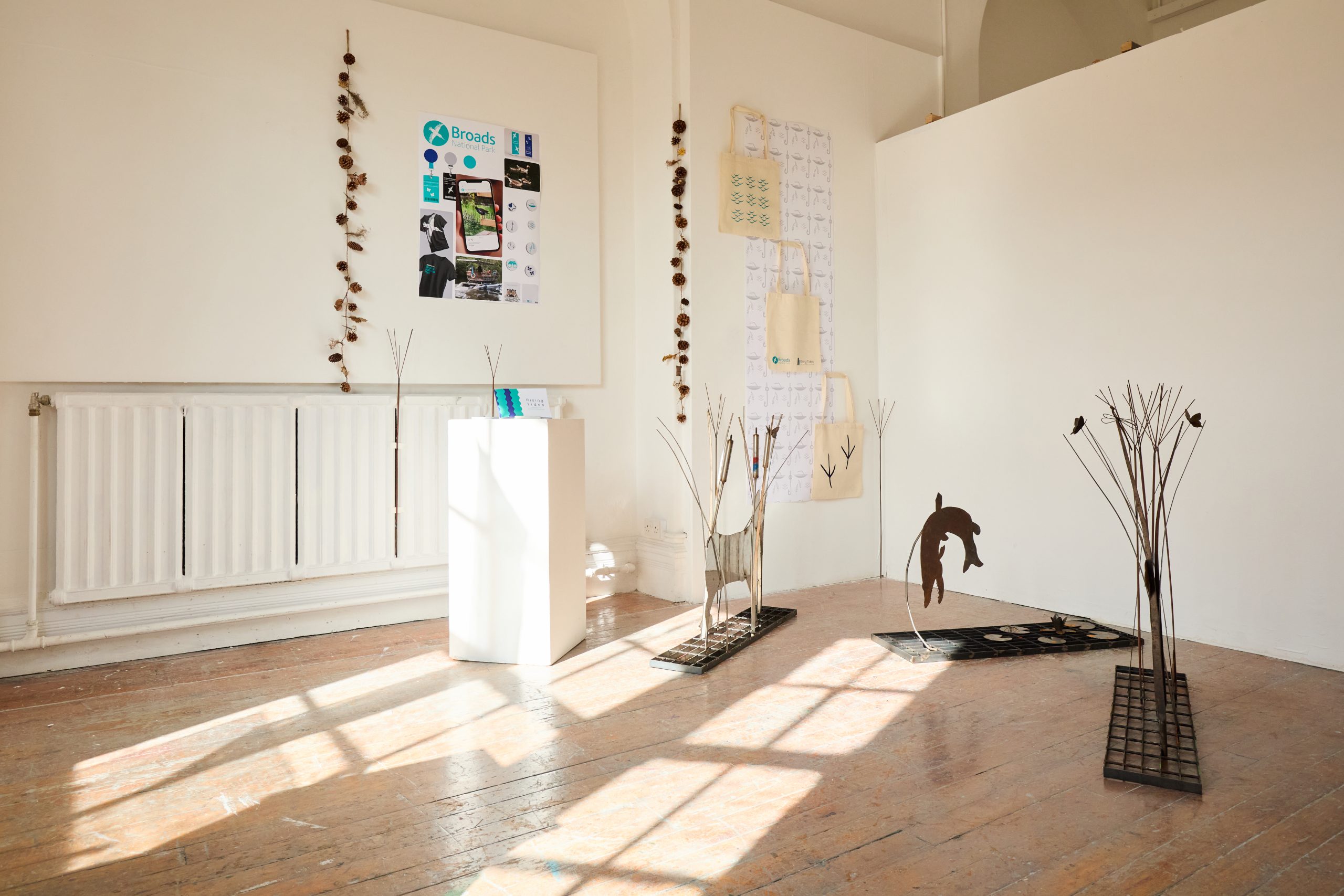 MA Communication Design •
MA Communication Design •Norwich announces Sustainability Award winners at Postgrad Festival 2025
Norwich University of the Arts' Sustainability Awards celebrate students’ commitment to sustainable and ethical practice. -
 Research •
Research •Shape Shift Converse Rework: Authentic co-creation of art in mental health settings
Exploring the story, impact and legacy of the Rivers Centre Project at Hellesdon Hospital. -
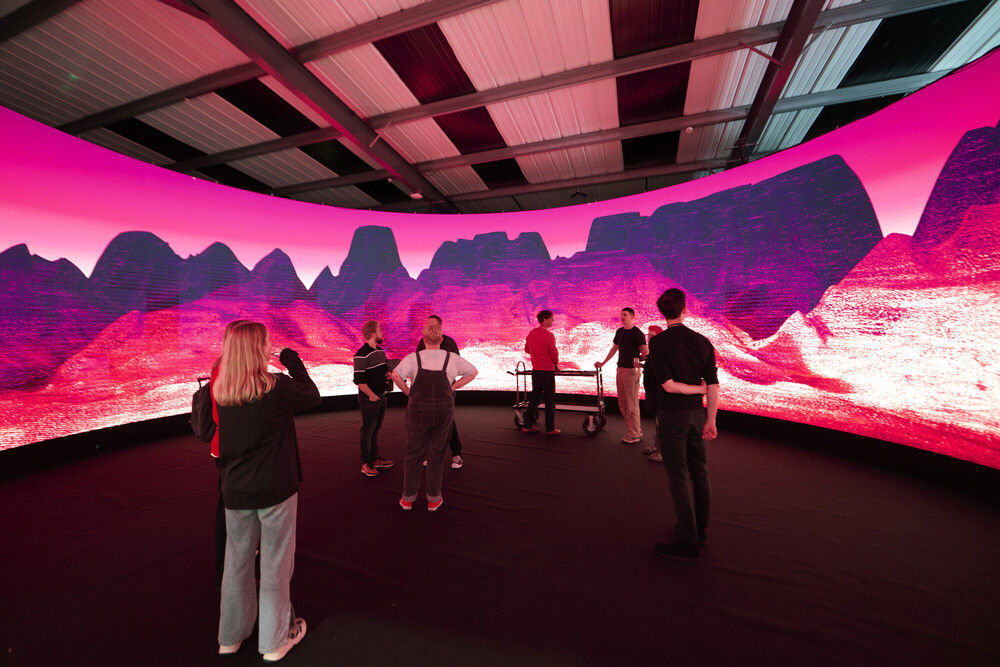 Institution •
Institution •Norwich University of the Arts Makes Historic Debut in Main Guardian University Guide
Norwich University of the Arts has marked a historic milestone, with its first-ever appearance in the Guardian University Guide’s national rankings. -
 BA Animation •
BA Animation •Norwich University of the Arts celebrates becoming a Rookies Certified School
Norwich University of the Arts has been named as a Rookies Certified School.
Contact us
For general enquiries, please get in touch with us.